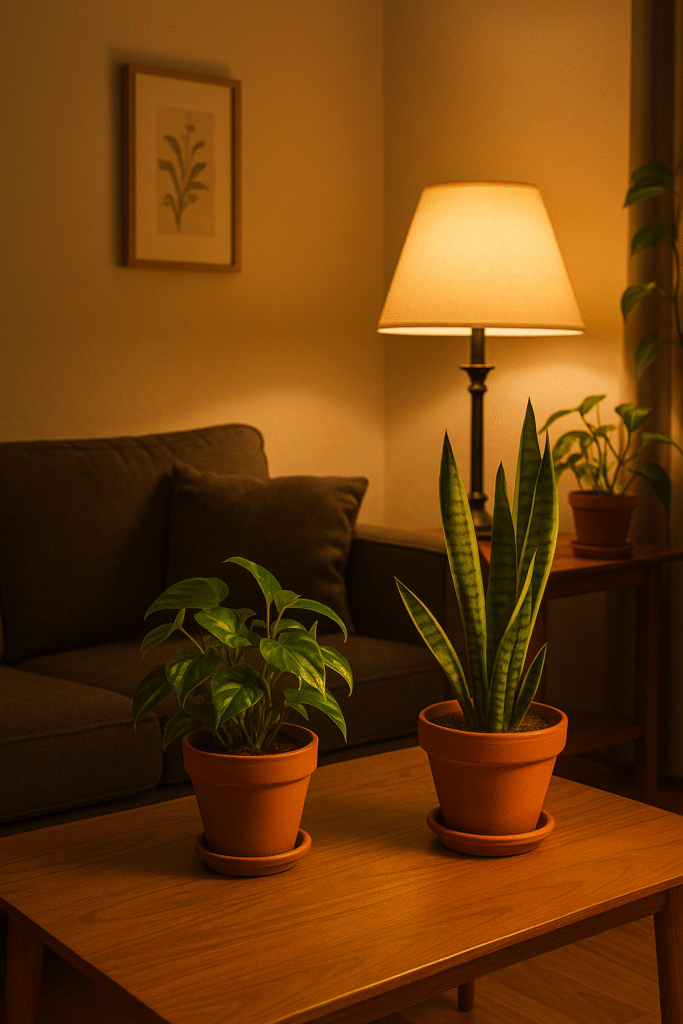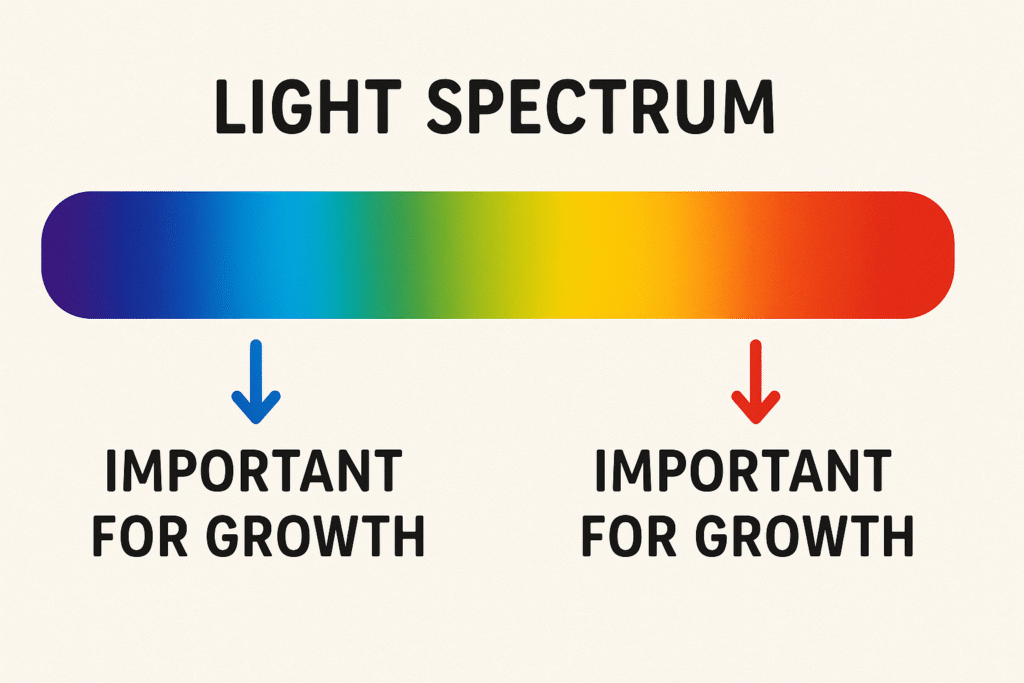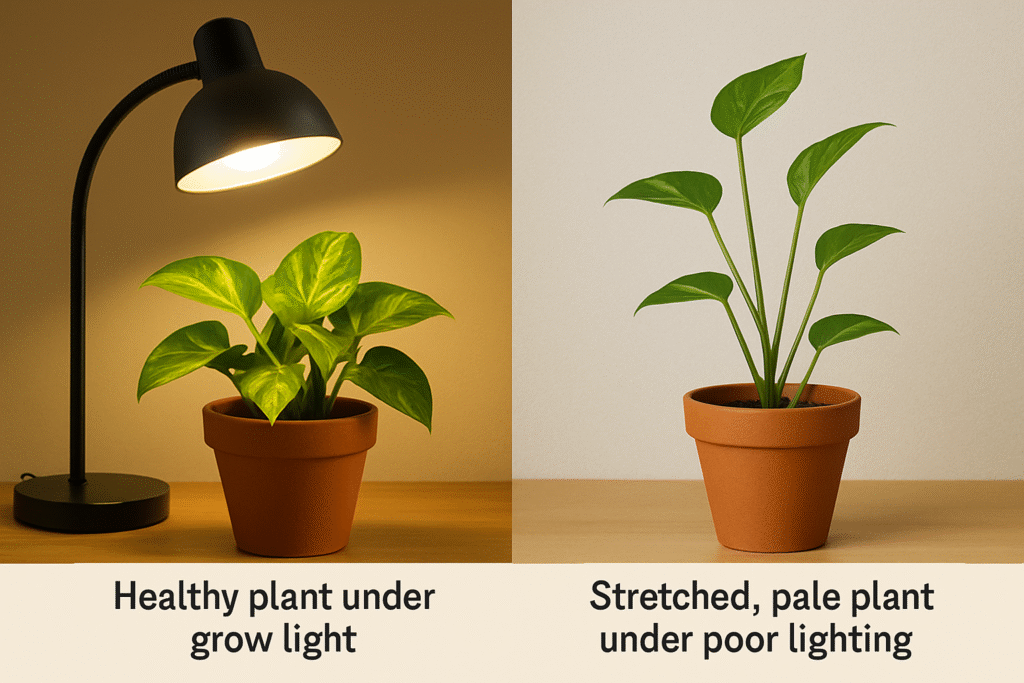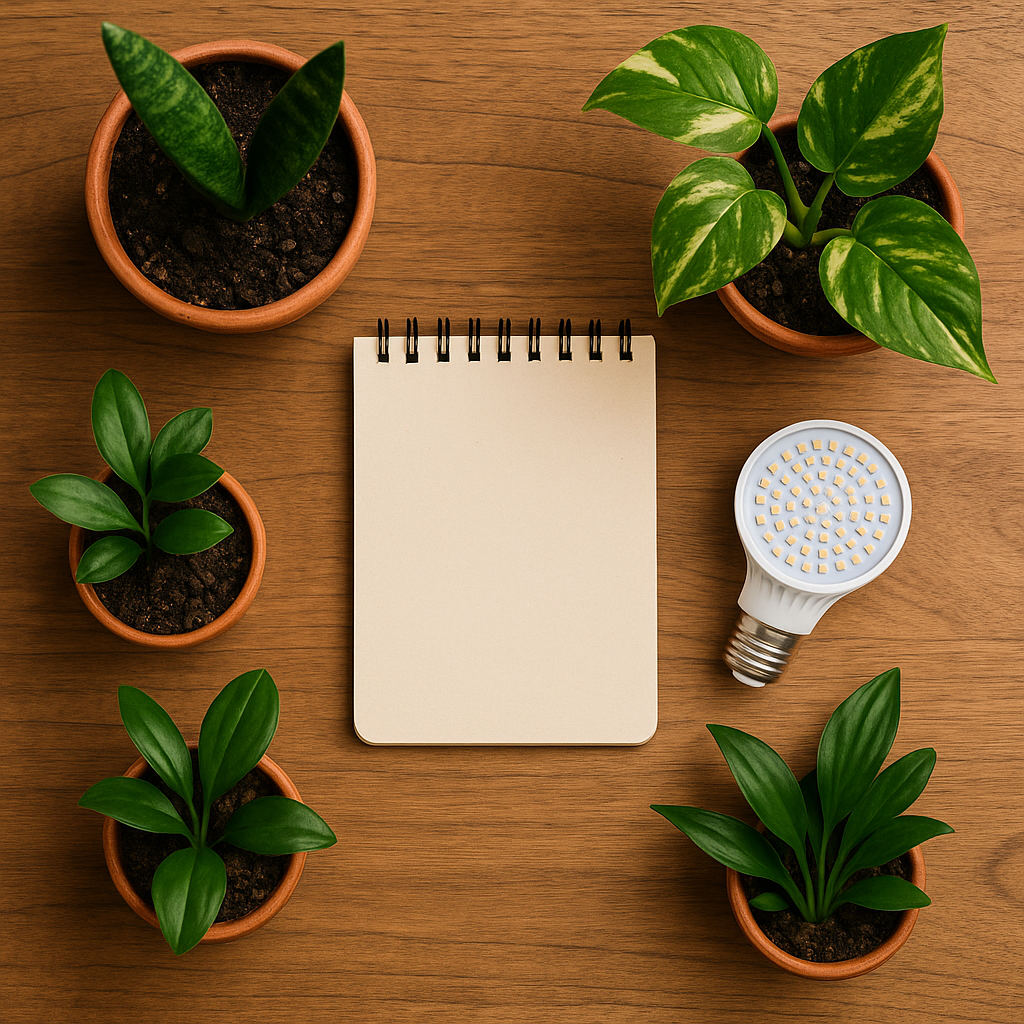Can Plants Grow Under House Lights? A Beginner’s Guide to Indoor Gardening with Artificial Light

Introduction
Have you ever looked at your leafy friend in a dim corner of your living room and wondered: “Can plants grow under house lights?”
If so, you’re not alone. Many beginner indoor gardeners are curious whether their everyday lighting can help their plants survive—or even thrive.
Light is one of the most critical elements for plant growth. It powers photosynthesis, the magical process that transforms light into energy. But what happens when natural sunlight is limited, and the only glow available comes from your overhead bulbs or desk lamp?
Let’s dig in 🌱
Understanding Plant Light Needs
🌞 Photosynthesis 101
Plants absorb light through their leaves and convert it into energy using a process called photosynthesis. This energy helps them grow, flower, and stay healthy.
🌈 The Light Spectrum

Not all light is created equal. Plants especially love blue light (which encourages leafy growth) and red light (which supports blooming and fruiting). These wavelengths are abundant in sunlight—and in specially designed grow lights.
💡 Light Intensity & Duration
Most houseplants need bright, indirect light for at least 8–12 hours a day. But the intensity of the light matters too—more on that in a moment.
What Are House Lights?
Let’s look at the most common types of household lighting:
- Incandescent bulbs: Warm, yellowish light with low energy efficiency and minimal blue/red spectrum coverage.
- Fluorescent bulbs: Found in kitchens and garages; better spectrum than incandescent but still limited.
- LED bulbs: The most energy-efficient, available in cool white and warm white tones. Some offer a decent spectrum, but not all are plant-friendly.
💡 In short: House lights are primarily designed for humans, not plants. Their spectrum and intensity are usually not strong enough for long-term plant health—but they can help in small ways.
Can House Lights Support Plant Growth?
✅ The Short Answer: Yes, but…
House lights can supplement natural light or support low-light plants, especially in areas that get a bit of daylight during the day.
Some plants are more forgiving and can tolerate low light or adapt to indirect artificial lighting, such as:
- Snake Plant
- Pothos
- ZZ Plant
These resilient houseplants won’t thrive like they would under the sun—but they’ll survive, especially with thoughtful placement and lighting duration.
House Lights vs. Grow Lights
Here’s how house lights stack up against true grow lights:
| Feature | House Lights | Grow Lights |
|---|---|---|
| Light Spectrum | Limited (designed for human eyes) | Full spectrum (blue + red) |
| Intensity | Low | High |
| Efficiency | Good for ambiance | Optimized for plant growth |
| Cost | Already installed | Requires purchase |
🎯 Conclusion: If you’re serious about indoor gardening, grow lights offer a noticeable upgrade in plant health, growth rate, and leaf color.
Tips for Growing Plants with House Lights
If you want to try growing plants with standard house lights, here are a few tips to maximize your success:
- Distance Matters: Keep plants 6–12 inches from the light source.
- Duration: Run the lights for 12–16 hours a day to mimic natural light cycles.
- Use Reflective Surfaces: Mirrors or white walls help bounce light around.
- Combine with Natural Light: Place plants near a window if possible and use house lights to boost weak daylight.
Best Low-Light Indoor Plants to Try
These indoor plants are well-known for tolerating artificial or low light conditions:
- ZZ Plant (Zamioculcas zamiifolia) – Almost unkillable and glossy-leafed.
- Pothos (Epipremnum aureum) – Fast-growing and great for hanging baskets.
- Snake Plant (Sansevieria) – Can tolerate low light and irregular watering.
- Peace Lily (Spathiphyllum) – Adds beauty and purifies air.
- Cast Iron Plant (Aspidistra elatior) – True to its name—hardy and durable.
🪴 All of these are beginner-friendly and perfect for testing indoor lighting setups.
When You Should Switch to Grow Lights

If your plant shows signs like:
- Leggy or stretched growth
- Pale or yellowing leaves
- Slow or no new growth
…it might be time to invest in LED grow lights for indoor gardening.
🛒 Beginner Grow Light Picks:
- Clip-on LED grow lamps (~$20)
- Full-spectrum LED bulb (fits regular socket)
- Clamp lamps with reflective hoods
Bonus: DIY Grow Light Setup at Home
Want to create a budget-friendly grow setup? Here’s how:
🛠️ What You’ll Need:
- LED full-spectrum bulb
- Clamp lamp or desk lamp
- Aluminum foil (for DIY reflectors)
- Timer (to automate light cycles)
✨ Quick DIY Tips:
- Line the inside of a cardboard box or cabinet with foil for reflection.
- Keep plants raised closer to the light using books or plant stands.
- Set the timer for 14 hours of light, 10 hours of darkness.
Total Cost: Under $30—worth it for happy, healthy houseplants!
Conclusion
So—do plants grow under house lights?
Yes, some can, especially if you choose the right species and use thoughtful lighting techniques. But if you’re aiming for lush indoor jungles or want to grow herbs and veggies indoors, you’ll see better results with dedicated grow lights.
🌿 Ready to experiment?
Start with a ZZ Plant or Snake Plant, place it under your desk lamp, and see how it fares. As your indoor gardening passion grows, you can slowly upgrade to more powerful lighting.

💬 Tell Us in the Comments!
What’s your favorite plant to grow indoors with artificial light? Have you tried DIY grow lights? Let us know—we’d love to feature your photos in an upcoming post!